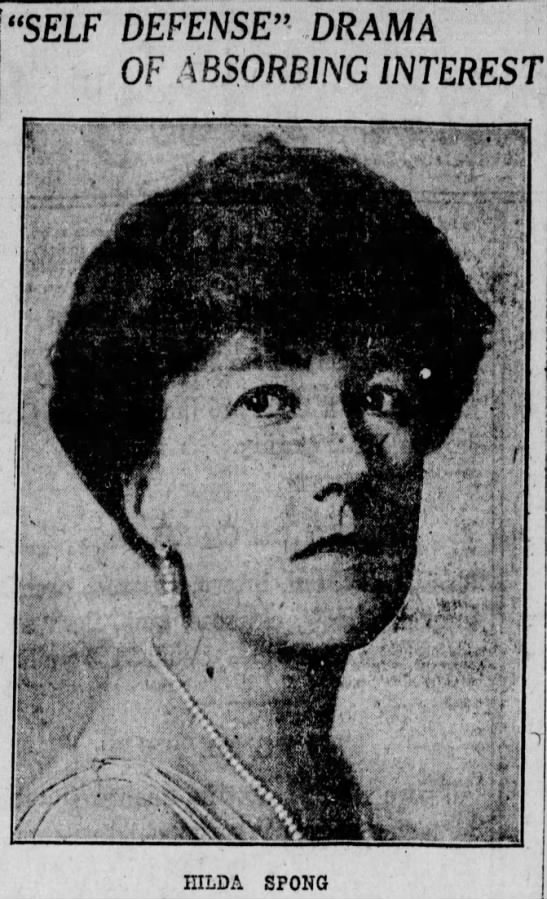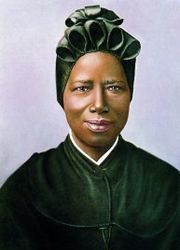#Hilda Fagan
Text







Fanbook cover by Amaebi. Somebody must really love Akito the Exiled.
The papers Rolo has behind his back read 'R2 script'. Maybe he wants them to rehearse on their voyage home.
#rolo lamperouge#lelouch lamperouge#suzaku kururugi#c.c.#code geass#akito hyuuga#leila malcal#Ayano Kosaka#Yukiya Naruse#ryo sayama#Ashley Ashra#Anna Clement#Jean Rowe#Shin Hyuuga Shaing#Julius Kingsley#Andrea Farnese#Michele Manfredi#Claus Warwick#Hilda Fagan#Oscar Hammel#Olivia Reuel#Ferilli Baltrow#Sarah Danes#Kate Novak#Alexander#Caretaker#formal attire
20 notes
·
View notes
Text

Akito the Exiled end card
#olivia x ferilli#hilda fagan#ferilli baltrow#olivia reuel#sarah danes#chloe winkel#kate novak#code geass#akito the exiled#joe wise#code geass akito the exiled#boukoku no akito#code geass boukoku no akito#official art
22 notes
·
View notes
Text
SELF DEFENSE
1920

Self Defense (originally known as The Higher Law) is a melodrama in three acts and a prologue by Myron C. Fagan. It was originally produced by Edgar MacGregor.
The first version of the play, The Higher Law, premiered in stock. Producer MacGregor is said to have had the play on his desk for more than a year.

Self Defense premiered at Nixon’s Apollo Theatre on the Atlantic City Boardwalk on July 20, 1920.
"Around the mystery of who killed ‘Chicken’ Gunnell, Fagan has woven circumstances that suffice to make 'Self Defense' a play of absorbing interest. It is a brand-new angle on a plot whose general ingredients are familiar - the death; those most logically the slayers; the incriminating proof, and the unexpected denouement. Mr. Fagan, however, permits his audience to see the pistol shot, and to proceed upon the natural assumption that one can believe what one sees after which, in the last five minutes, he proceeds to prove the opposite." ~ ATLANTIC CITY reviewer

From AC to AP, the play was seen at the Savoy in Asbury Park NJ on July 26th.

On August 29th, the play, at first mentioned for Broadway in August, instead headed West to Chicago, setting up shop at the Blackstone Theatre.
"’Self Defense’ is not one of those plays that are too bad to be funny. It is really a comic thing... and it is funny, sometimes, even when it Is not serious. For instance. Joseph Allen, an expert in musical comedy constables, is intentionally laughable, as he always is. You can, if you know the witty Mr. Camp, extract a smile now and then from the remarks of his airy replica. I think he calls cigarettes ‘coffin nails’ and a highball an ‘eye-opener.' There is a kingly coroner, too, made up like Henry Cabot Lodge, who slings a nasty inquest in the final act. At the end it is discovered that a creepy butler killed ‘Chicken' Gunnell, because the Chicken had once done wrong by sister Nell.” ~ CHICAGO TRIBUNE

From Chicago, it traveled to Buffalo NY’s Majestic Theatre, opening on September 27th. Playwright Fagan was once a newspaper columnist in Buffalo.
This was the end of the road of Self Defense, which never got closer to Broadway than Buffalo.
“The theatre is the stethoscope which indicates the pulse of the public and rarely are its deductions incorrect.” ~ Myron C. Fagan
In 1929, the sound movie of his 1928 play The Great Power earned the dubious record of being the shortest run of any movie at the Capitol Theatre, New York. It was replaced with a silent comedy film after only one performance.
#Myron C. Fagan#Self Defense#Melodrama#Theatre#Atlantic City#Nixon's Apollo Theatre#1920#Edgar MacGregor#Hilda Spong#Broadway Play#Stage
2 notes
·
View notes
Text

SAINTS FOR FEBRUARY 08
St. Cuthman, 900 A.D. A saint of southern England, a holy Sheppard near Steyning in Sussex. He cared for his aging mother and, aided by his neighbors, built a church in Steyning. Cuthman, who was known for his miracles, was honored in the church that he built. His relics were later transferred to FeCamp, in France.
St. Elfleda, 714 A.D. Benedictine abbess also known as Edifleda, Elfeda, Elgiva, or Ethelfieda. The sister of King Oswy of Northumbria, England, she was placed as an infant in the convent of Hartlepool. The abbess, St. Hilda, took Elfieda to Whitby, and she succeeded Hilda there as abbess. Elfieda was powerful in Church affairs and mediated a dispute between Sts. Wilfrid and Theodore. She also aided St. Cuthbert. Elfieda died at Whitby.
St. Jacut and Guethenoc, 5th century. Disciples of St. Budoc, sons of Sts. Fagan and Gwen, and brothers of St. Gwenaloe. They were forced to leave Britain by invading Saxons, probably going with Budoc to Brittany.
St. Kigwe. A Welsh saint, sometimes called Ciwg, Cuick, Kewe, or Kigwse. Nothing is known about her, and she is often identified with St. Ciwa. Kigwe is venerated in Gwent, Wales.
St. Llibio, 6th century. The Patron Saint of Llanlibio on Anglesey Island, Wales.
St. Oncho, 600 A.D. Irish saint, also listed as Onchuo. A poet and pilgrim, he devoted himself to preserving the Celtic traditions, researching the relics of Irish saints. He died of Clonmore monastery where he was enshrined.
ST. JEROME EMILIANI, FOUNDER OF SOMASCHI FATHERS, PATRON OF ORPHANS AND THE NEEDY YOUTH
ST. JOSEPHINE BAKHITA, VIRGIN-The story of St. Josephine Bakhita, the Sudanese slave who became a Canossian Sister, is one of the most extraordinary tales of oppression and redemption in the Church. This saint from Darfur, who lived between the 19th and 20th centuries, went from chains and torture to the service of the Gospel.
https://www.vaticannews.va/en/saints/02/08/st--josephine-bakhita--virgin.html
0 notes
Text

illustration by Shimamura Hidekazu
#leila x anna#anna x leila#sarah x olivia#hilda x ferilli#leila malcal#leila breisgau#anna clément#anna clement#sophie randle#kate novak#ferilli baltrow#chloe winkel#hilda fagan#olivia reuel#sarah danes#code geass#akito the exiled#code geass akito the exiled#code geass boukoku no akito#boukoku no akito#official art#shimamura hidekazu#hidekazu shimamura
14 notes
·
View notes
Text
SAINTS FOR FEBRUARY 08
St. Cuthman, 900 A.D. A saint of southern England, a holy Sheppard near Steyning in Sussex. He cared for his aging mother and, aided by his neighbors, built a church in Steyning. Cuthman, who was known for his miracles, was honored in the church that he built. His relics were later transferred to FeCamp, in France.
St. Elfleda, 714 A.D. Benedictine abbess also known as Edifleda, Elfeda, Elgiva, or Ethelfieda. The sister of King Oswy of Northumbria, England, she was placed as an infant in the convent of Hartlepool. The abbess, St. Hilda, took Elfieda to Whitby, and she succeeded Hilda there as abbess. Elfieda was powerful in Church affairs and mediated a dispute between Sts. Wilfrid and Theodore. She also aided St. Cuthbert. Elfieda died at Whitby.
St. Jacut and Guethenoc, 5th century. Disciples of St. Budoc, sons of Sts. Fagan and Gwen, and brothers of St. Gwenaloe. They were forced to leave Britain by invading Saxons, probably going with Budoc to Brittany.
St. Kigwe. A Welsh saint, sometimes called Ciwg, Cuick, Kewe, or Kigwse. Nothing is known about her, and she is often identified with St. Ciwa. Kigwe is venerated in Gwent, Wales.
St. Llibio, 6th century. The Patron Saint of Llanlibio on Anglesey Island, Wales.
St. Oncho, 600 A.D. Irish saint, also listed as Onchuo. A poet and pilgrim, he devoted himself to preserving the Celtic traditions, researching the relics of Irish saints. He died of Clonmore monastery where he was enshrined.
ST. JEROME EMILIANI, FOUNDER OF SOMASCHI FATHERS, PATRON OF ORPHANS AND THE NEEDY YOUTH
0 notes
Text

SAINTS FEBRUARY 08-2022
St. Cuthman, 900 A.D. A saint of southern England, a holy Sheppard near Steyning in Sussex. He cared for his aging mother and, aided by his neighbors, built a church in Steyning. Cuthman, who was known for his miracles, was honored in the church that he built. His relics were later transferred to FeCamp, in France.
St. Elfleda, 714 A.D. Benedictine abbess also known as Edifleda, Elfeda, Elgiva, or Ethelfieda. The sister of King Oswy of Northumbria, England, she was placed as an infant in the convent of Hartlepool. The abbess, St. Hilda, took Elfieda to Whitby, and she succeeded Hilda there as abbess. Elfieda was powerful in Church affairs and mediated a dispute between Sts. Wilfrid and Theodore. She also aided St. Cuthbert. Elfieda died at Whitby.
St. Jacut and Guethenoc, 5th century. Disciples of St. Budoc, sons of Sts. Fagan and Gwen, and brothers of St. Gwenaloe. They were forced to leave Britain by invading Saxons, probably going with Budoc to Brittany.
St. Kigwe. A Welsh saint, sometimes called Ciwg, Cuick, Kewe, or Kigwse. Nothing is known about her, and she is often identified with St. Ciwa. Kigwe is venerated in Gwent, Wales.
St. Llibio, 6th century. The Patron Saint of Llanlibio on Anglesey Island, Wales.
St. Oncho, 600 A.D. Irish saint, also listed as Onchuo. A poet and pilgrim, he devoted himself to preserving the Celtic traditions, researching the relics of Irish saints. He died of Clonmore monastery where he was enshrined.
St. Jerome Emiliani, founder of the Somaschi Fathers and is the patron saint of orphans. Feastday February 8
ST. JOSEPHINE BAKHITA, VIRGIN, St. Josephine Bakhita Saint Josephine Margaret Bakhita was born around 1869 in the village of Olgossa in the Darfur region of Sudan. She was a member of the Daju people and her uncle was a tribal chief. Due to her family lineage, she grew up happy and relatively prosperous, saying that as a child, she did not know suffering. Feb.8
0 notes
Photo

ENGLISH SPEAKING SAINTS February 8
St. Cuthman, 900 A.D. A saint of southern England, a holy Sheppard near Steyning in Sussex. He cared for his aging mother and, aided by his neighbors, built a church in Steyning. Cuthman, who was known for his miracles, was honored in the church that he built. His relics were later transferred to FeCamp, in France.
St. Elfleda, 714 A.D. Benedictine abbess also known as Edifleda, Elfeda, Elgiva, or Ethelfieda. The sister of King Oswy of Northumbria, England, she was placed as an infant in the convent of Hartlepool. The abbess, St. Hilda, took Elfieda to Whitby, and she succeeded Hilda there as abbess. Elfieda was powerful in Church affairs and mediated a dispute between Sts. Wilfrid and Theodore. She also aided St. Cuthbert. Elfieda died at Whitby.
St. Jacut and Guethenoc, 5th century. Disciples of St. Budoc, sons of Sts. Fagan and Gwen, and brothers of St. Gwenaloe. They were forced to leave Britain by invading Saxons, probably going with Budoc to Brittany.
St. Kigwe. A Welsh saint, sometimes called Ciwg, Cuick, Kewe, or Kigwse. Nothing is known about her, and she is often identified with St. Ciwa. Kigwe is venerated in Gwent, Wales.
St. Llibio, 6th century. The Patron Saint of Llanlibio on Anglesey Island, Wales.
St. Oncho, 600 A.D. Irish saint, also listed as Onchuo. A poet and pilgrim, he devoted himself to preserving the Celtic traditions, researching the relics of Irish saints. He died of Clonmore monastery where he was enshrined.
0 notes
Quote
ENGLISH SPEAKING SAINTS
February 8
St. Cuthman, 900 A.D. A saint of southern England, a holy Sheppard near Steyning in Sussex. He cared for his aging mother and, aided by his neighbors, built a church in Steyning. Cuthman, who was known for his miracles, was honored in the church that he built. His relics were later transferred to FeCamp, in France.
St. Elfleda, 714 A.D. Benedictine abbess also known as Edifleda, Elfeda, Elgiva, or Ethelfieda. The sister of King Oswy of Northumbria, England, she was placed as an infant in the convent of Hartlepool. The abbess, St. Hilda, took Elfieda to Whitby, and she succeeded Hilda there as abbess. Elfieda was powerful in Church affairs and mediated a dispute between Sts. Wilfrid and Theodore. She also aided St. Cuthbert. Elfieda died at Whitby.
St. Jacut and Guethenoc, 5th century. Disciples of St. Budoc, sons of Sts. Fagan and Gwen, and brothers of St. Gwenaloe. They were forced to leave Britain by invading Saxons, probably going with Budoc to Brittany.
St. Kigwe. A Welsh saint, sometimes called Ciwg, Cuick, Kewe, or Kigwse. Nothing is known about her, and she is often identified with St. Ciwa. Kigwe is venerated in Gwent, Wales.
St. Llibio, 6th century. The Patron Saint of Llanlibio on Anglesey Island, Wales.
St. Oncho, 600 A.D. Irish saint, also listed as Onchuo. A poet and pilgrim, he devoted himself to preserving the Celtic traditions, researching the relics of Irish saints. He died of Clonmore monastery where he was enshrined.
0 notes